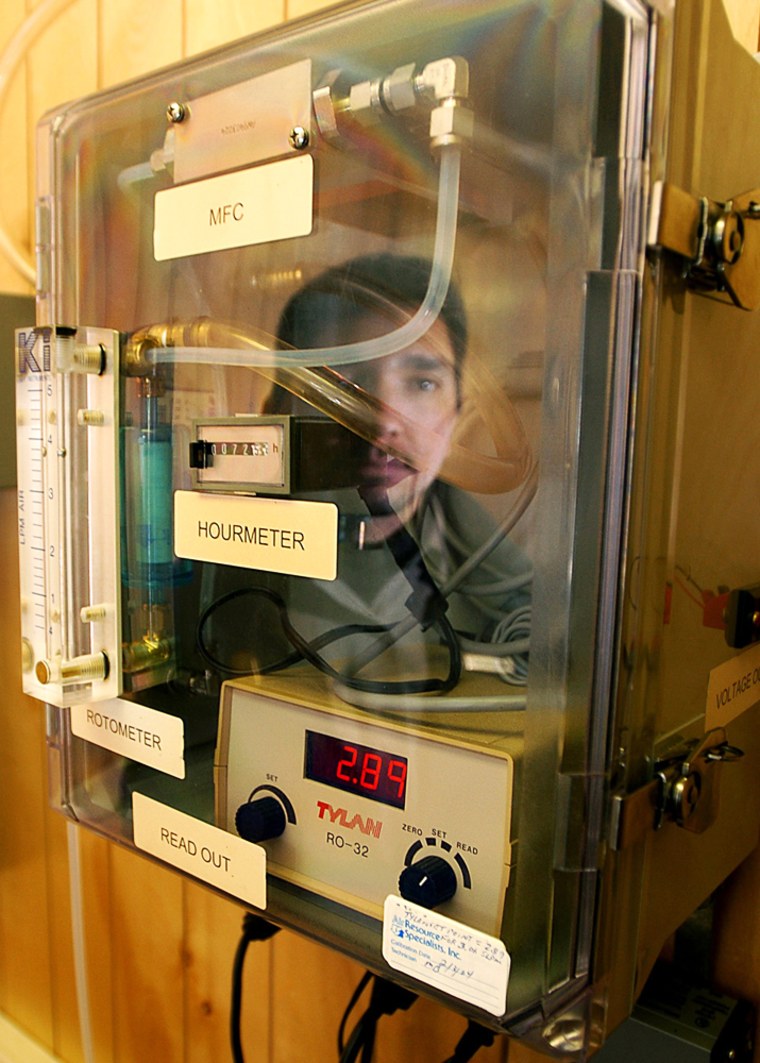Hike through Rocky Mountain National Park, enjoy the wildlife and take a deep breath of mountain air — as long as you’re not asthmatic.
The wind blows enough pollution from the sprawling metropolitan Denver area on some days that the park violates federal clean air standards for ozone. The Environmental Protection Agency probably will include the park when it declares 11 counties along Colorado’s Front Range in violation of the Clean Air Act.
“2003 was a giant step backward in what has been an ongoing effort to try and protect public health and the environment from ozone and smog,” said Vickie Patton, senior attorney for Environmental Defense in Boulder.
Two years ago, federal officials said Denver no longer violated major air quality rules, making it the first city in the nation to get a clean bill of health for the five federal air quality standards it once violated.
But the EPA is about to strip that badge of honor after the implementation of a tougher standard and some of the highest levels of ground-level ozone ever recorded in Denver. One monitor last summer recorded the highest level of ozone since 1986 and the city overall violated tougher new air quality standards at least 33 times.
Ozone, a colorless, odorless gas made up of industrial pollution and car exhaust, becomes a problem on bright sunny days when the air heats up. Experts say it is the latest headache to come out of Denver’s booming population — which reached 2.2 million in 2002 — and it poses significant health risks, especially for people with respiratory problems.
Impact on wildlife
At Rocky Mountain National Park, an air monitor last summer found seven incidents in which ozone exceeded federal health standards, said Mike Silverstein of the state Department of Public Health and Environment.

“The air comes and goes, and most of the days it’s good to excellent air quality,” said park biologist Karl Cordova. “On other days, it’s not what we hope it would be.”
There are no documented cases of people suffering direct ills from ozone at the park, and Cordova said there is no evidence on whether ozone is hurting the plants.
However, Cordova said studies show 13 species of flora — including ponderosa pine and quaking aspen — can suffer significant damage from exposure to ozone. The ozone penetrates leaves and can alter their chemical composition to prevent photosynthesis.
Colorado and the EPA have agreed on a plan to reduce and control ozone in the Denver area and comply with federal standards.
Richard Long, the EPA’s director of regional air and radiation programs, said the state has met all deadlines so far and is not in danger of sanctions for nonattainment — sanctions that can include greater oversight of cars, fuels, factories and gas wells in the metro area.
Should more be done?
Whether the state’s efforts to control ground-level ozone are adequate, however, is open for debate.
Patton, the Environmental Defense attorney, said she is looking forward to a meeting in March of the state Air Quality Control Commission to see whether political and business leaders are taking the lead in ensuring environmental safety.
“I think we are at a crossroads right now, and over the next couple of months, senior state officials will be faced with making some important decisions about Colorado’s commitment to protecting public health and the environment,” Patton said.
Rocky Mountain National Park isn’t the only national park with air quality troubles, according to the National Parks Conservation Association.
The South’s Great Smoky Mountains National Park, for example, has had 30 plant species visibly damaged by ozone, the association says. Since 1998, there have been 175 days with unhealthy ozone levels in the park, the country’s most-visited.
“In Colorado, trends show that ozone pollution is increasing and while you might not be at the level of Great Smoky Mountains National Park, you don’t want to be in such a grave situation that that designation can be reversed,” said Jill Stephens, a program analyst for the group.
The group issued a report detailing the problem of ozone in national parks. It is online at www.npca.org/across_the_nation/visitor_experience/code_red/
The EPA has background on its visibility program at www.epa.gov/air/visibility/program.html.
